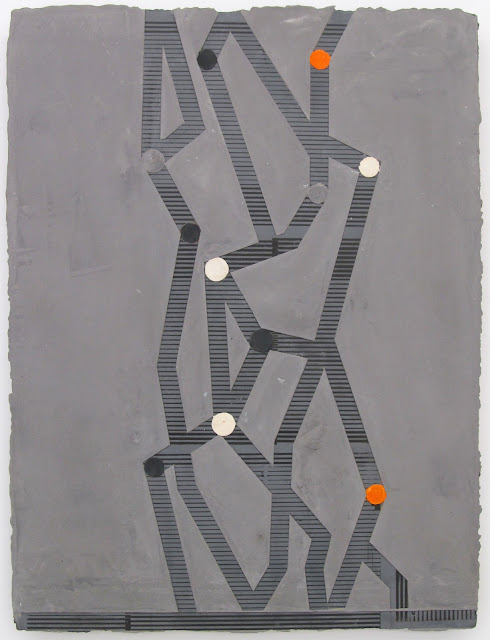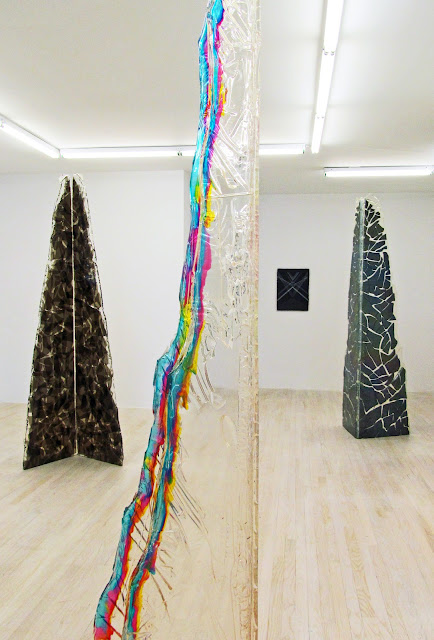 |
| Unknown Control Over Country's Horse Power, 2010, hand ground mineral pigments w/gum arabic, 8 x 6" |
Raja Ram Sharma
Contemporary Paintings from Rajasthan
Contemporary Paintings from Rajasthan
at The Drawing Room
One of the best things about the age we live in is its cross culturalism. In the arts, the world is wider -- more egalitarian -- and infinitely more interesting than it was 20 years ago. Fingertip communication has changed everything, with smartphones and the internet helping to level the playing field across the globe. We stand more shoulder to shoulder now, and our perception of contemporary art is that much more broad, allowing cultural exchange that inspires a new sort of camaraderie, appreciation and awe.
Enter Raja Ram Sharma, master temple painter and contemporary artist whose intimate, sacred, fantastical works are currently on view at The Drawing Room in East Hampton. Whether you're a painter, collector, art world devotee or simple phenomenologist, you must see this exhibition. Bring your readers, because the level of intrigue in these small works requires observation skills of the keenest order.
 |
| Independent, 2011, hand ground mineral pigments with gum arabic, 6 x 8 1/8" |
Raja Ram Sharma lives in Udaipur, Rajasthan in northwest India, a sumptuous lake city filled with 16th century temple complexes, palaces and elaborate gardens. Sharma's aptitude for drawing was exhibited so early that by age 7 he was sent to live with a renowned Indian painter. There he studied the traditions of the Nathdwara school, and learned to paint pichwai, the cloth paintings that hang behind Krisha in Hindu temples across Asia. Now a master temple painter, Sharma presides over a pichwai workshop where apprentices work to his specifications.
 |
| Before the Storm, 2012, hand ground mineral pigments with gum arabic, 6 1/8 x 8 5/8" |
In his free time, Sharma paints in the tradition of the Indian miniature typical of works developed in the Mughal empire. He applies mineral pigments to recycled paper, transforming each stroke as if it were a precious jewel. The marvelous detail is owed both to a lifetime of study as well as the single-hair brushes he makes from squirrel hair. (Single-hair is a bit of a misnomer -- it's not literally a single hair -- it's a tuft of hair from the tail of a squirrel that is shaped to allow a single hair to ascend to the tip). The bounce and flexibility of each brush is key to its use. The detail below measures less than one square inch of the painting above.
 |
| detail: Before the Storm |
The origins of the Persian miniature date back to 16th century. Typical of these paintings then, and not so different now, were the depictions of court life, historic battles, hunting scenes, landscape and wildlife. Today the art itself, while popular, is considered by the cultural elite as a part of the craft tradition, existing outside of the fine arts. It's not uncommon for contemporary artists in India eschew this magical tradition in spite of its delicate beauty. In fact, the ubiquitous miniatures found in local bazaars and tourist venues are often copies painted by teams of artisans, frequently falsely aged to have the appearance of antiquity. And throughout history -- even at the highest levels -- the subject matter in these particular paintings has been determined by patronage, not by individual expression. In this regard Sharma's new work, driven solely by his own artistic vision, is something of a revolution.
 |
| Flight to Freedom, 2011, hand ground mineral pigments w/gum arabic, 12 1/4 x 7 3/8" |
For Raja Ram Sharma, a commitment to practice, a large following, and a new found independence has armed him with the will to exercise his voice well beyond the existing conventions.
When Victoria Munroe (co-owner of The Drawing Room, with Emily Goldstein) met the artist in 2003, he was at the cusp of artistic liberation. She wanted to exhibit his work and offered him an extraordinary creative outlet by saying, "paint what you want." A revelation for any artist -- to be sure -- but in this case, unprecedented.
 |
| Study I, 2001, hand ground mineral pigments with gum arabic, 6 x 8 1/8" |
Raja Ram Sharma's first exhibition at the former Victoria Munroe Fine Arts in Boston garnered reviews in Art in America, Arts of Asia and The New York Times. Two of Sharma's paintings now hang between 16th and 17th century miniatures at the Boston Museum of Fine Art.
There
have been moments of dazzling balance between the representational and
the abstract -- for example, Byzantine mosaics; pre-Columbian and
American Indian textiles and ceramics; Japanese screens; Mughal painting; and post-Impressionism.
Roberta Smith, New York Times, March 28, 2010
"Until it's on exhibit," said Navneet, "no one sees this work other than Raja and his wife. In fact, this work has not been shown in India -- it's the first time I've even seen it framed."
 |
| Navneet Raman, owner and curator of Kriti Gallery |
"When we exhibited his paintings in 2005
(in India), it was the first time miniature paintings were shown in a stand-alone exhibition outside a museum. Every piece sold on opening night. He has many followers now. In October he will exhibit at Kriti (in Benares) -- we anticipate a successful event."
The Udaipur region suffers tremendous annual droughts that are followed by drenching monsoons, and in this way the region bounces from the inhospitable to the luscious, and then back again. Its undulating landscape provides little agricultural terrain and the area is constantly imperiled by a diminishing underground water table. Sharma locates this vulnerability in the sun-burnt hillsides and empty palace grounds of his paintings, everywhere devoid of humans. And then, it is transformed into a verdant Shangri-La, cycling just as it might in the natural world.
 |
| photo Cary Wolinsky, National Geographic |
Sharma's wife hand grinds pigment for 10 to 12 days straight -- yes, every day for a week and a half -- using a mortar and pestle. Each mineral exhibits singular qualities that require varied applications, assorted brushes and specific treatments. A lifetime of preparation stands at the foreground of the use of these pigments.
And, in case you're wondering, in Udaipur and other parts of India you don't get your studio materials at 1-800-mineralpigments. Sources for the best pigments are tricky to locate and complicated to maintain, requiring assiduous research and frequent updates.
"The average person, if they got a bag of mineral pigments," said Navneet, "they would have absolutely no idea what to make of them."
So, after forty some years of painting what other people dictate, what's an artist to do?
Sharma's recent works depict a world in which humanity is represented only by its architecture, its articulated landscapes and the wildlife by which it is surrounded. Boats drift without passengers, horses without riders and empty windows, loggias and bridges abound. It is the artist's personal testament to humankind's lurking dissociation to the natural world. In this regard, Sharma's paintings possess a sense of longing, stillness and solitude and a reverence for the depth of this rich cultural landscape.
 |
| The Signs of Change with the Advent of the Monsoon, 2010 |
Raja Ram Sharma, Contemporary Paintings from Rajasthan is on view through October 29. Don't miss this wonderful show.
 Another interesting note: currently on view at the Museum of Art and Design, selections from the extraordinary collection of Doris Duke's Shangri-La in Hawaii are on view in the exhibit Doris Duke's Shangri-La: Architecture, Landscape and Islamic Art.
Another interesting note: currently on view at the Museum of Art and Design, selections from the extraordinary collection of Doris Duke's Shangri-La in Hawaii are on view in the exhibit Doris Duke's Shangri-La: Architecture, Landscape and Islamic Art. This marks the first time any of the foundation's 3,500 works of art have been exhibited off site, and includes works by six contemporary artists who were recently in residence there. The Gods must be speaking...
















